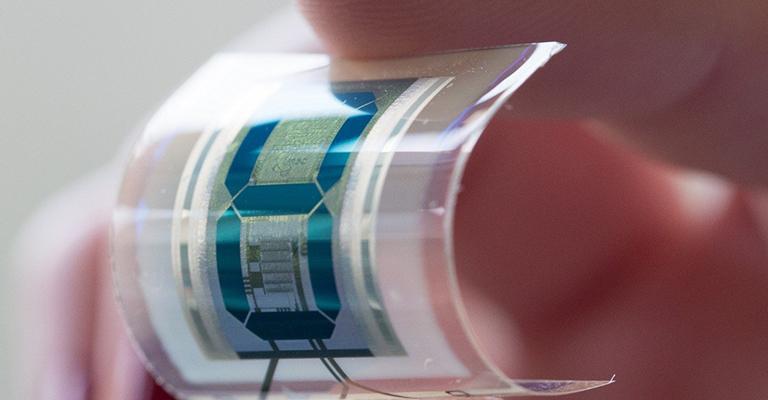The Role of Advanced Materials in Flexible Sensor Manufacturing

The global printed and flexible sensors market is entering an exciting growth phase, fueled by advancements in consumer electronics, healthcare, aerospace, and defense. Valued at US$ 1.4 Bn in 2022, the industry is projected to expand at a CAGR of 13.4% between 2023 and 2031, reaching US$ 4.1 Bn by the end of 2031.
This growth is being shaped by the demand for smaller, smarter, and high-performing devices that improve health, efficiency, and comfort in everyday life. With rapid research and development in advanced materials and printing technologies, printed and flexible sensors are redefining how industries approach monitoring, diagnostics, and connectivity.
What Are Printed and Flexible Sensors?
Printed and flexible sensors are manufactured using conductive inks and functional materials. These sensors are thin, lightweight, and adaptable enough to be integrated into curved or irregular surfaces. They deliver real-time data to cloud systems and serve as a cornerstone for Industry 4.0 and the Internet of Things (IoT).
Because they are cost-effective, scalable, and customizable, printed sensors are gaining popularity across industries that need compact, reliable, and affordable monitoring solutions. Their applications span from medical wearables to aerospace components, smart packaging, and environmental monitoring.
Key Growth Drivers
1. Rise of Biomedical Applications
Healthcare has emerged as one of the most promising areas for printed and flexible sensors. Wearable biomedical devices equipped with these sensors are enabling real-time monitoring of parameters such as heart rate, respiration, brain activity, and glucose levels.
For instance, biosensors are already widely used to monitor blood glucose in diabetic patients. With global populations aging and chronic diseases on the rise, demand for non-invasive monitoring and self-diagnostic systems is growing.
Printed stretchable sensors are also revolutionizing prosthetics, artificial skin, and surgical tools, while tactile sensors mimicking human touch are supporting progress in rehabilitation and sports analytics.
2. Aerospace and Defense Applications
The aerospace sector is increasingly adopting printed and flexible sensors to reduce weight, save space, and enhance efficiency. Sensors can be directly printed onto 3D surfaces such as aircraft wings and jet engine blades, eliminating the need for bulky wiring and circuit boards.
These conformal sensors provide real-time monitoring of structural integrity, fuel efficiency, and engine performance. The ability to predict maintenance needs and detect potential failures before they cause flight delays is a game-changer.
In fact, according to the Aerospace, Security and Defence Industries Association of Europe, civil aeronautics turnover rose by over 30% in 2021, reaching US$ 125.8 Bn. Such sectoral growth is expected to create significant opportunities for printed sensor manufacturers.
3. Innovation in Printing Technologies
Among various techniques, inkjet printing is becoming the dominant method for producing flexible sensors. It offers advantages such as:
- Low-cost, high-throughput production
- Customizable designs for diverse applications
- Rapid prototyping for wearable electronics
The segment is projected to expand at a CAGR of 14.5% during the forecast period, thanks to its efficiency and scalability. Other methods, including screen printing, flexography, and aerosol jet printing, also play a role in producing specialized sensor applications.
Market Segmentation Insights
Printed and flexible sensors come in various types, including:
- Biosensors (fastest-growing segment)
- Capacitive touch sensors
- Gas sensors
- Image sensors
- Printed photodetectors
- Temperature and proximity sensors
Among these, biological sensors are projected to expand at a CAGR of 13.9%, largely due to their role in medical monitoring and diagnostics.
From a material standpoint, conductive inks and polymer substrates dominate the market, given their flexibility, durability, and compatibility with mass-production methods.
Regional Outlook
- Asia Pacific leads the global market, holding 43.5% share in 2022. The region’s dominance stems from its strong electronics ecosystem in China, Japan, and South Korea, coupled with rapid adoption of flexible technologies in consumer electronics and automotive industries.
- North America follows, driven by innovation, R&D, and advanced healthcare infrastructure. Companies in the U.S. and Canada are exploring printed sensors in fields such as flexible displays, batteries, and medical devices.
- Europe remains a strong contender due to investments in aerospace, automotive, and medical applications, while emerging markets in Latin America and the Middle East are gradually adopting printed electronics in industrial and defense sectors.
Competitive Landscape
The market is highly competitive, with key players focusing on R&D, product innovation, and strategic partnerships. Notable companies include:
- Henkel Group
- Jabil Inc.
- Molex, LLC
- Nissha Co., Ltd.
- Optomec, Inc.
- Tekscan, Inc.
- Brückner Maschinenbau GmbH & Co. KG
- Flexpoint Sensor Systems Inc.
Recent innovations highlight the industry’s dynamic nature:
- Henkel (2023): Launched the Qhesive Solutions Sensor INKxperience Kit, enabling IoT engineers to explore sensor integration.
- AMBER Research Centre (2020): Opened a dedicated additive manufacturing lab in Dublin to push the boundaries of 2D and 3D printed sensors.
Outlook
By 2031, the printed and flexible sensors market will be worth over US$ 4.1 Bn, reflecting its central role in next-generation technologies. From wearable health trackers to smart aircraft systems, the applications of these sensors will continue to expand, powered by innovation in printing methods, materials science, and IoT integration.
As industries strive for smaller, smarter, and more sustainable solutions, printed and flexible sensors will remain at the forefront of technological transformation.
- Art
- Causes
- Crafts
- Dance
- Drinks
- Film
- Fitness
- Food
- Games
- Gardening
- Health
- Home
- Literature
- Music
- Networking
- Other
- Party
- Religion
- Shopping
- Sports
- Theater
- Wellness


